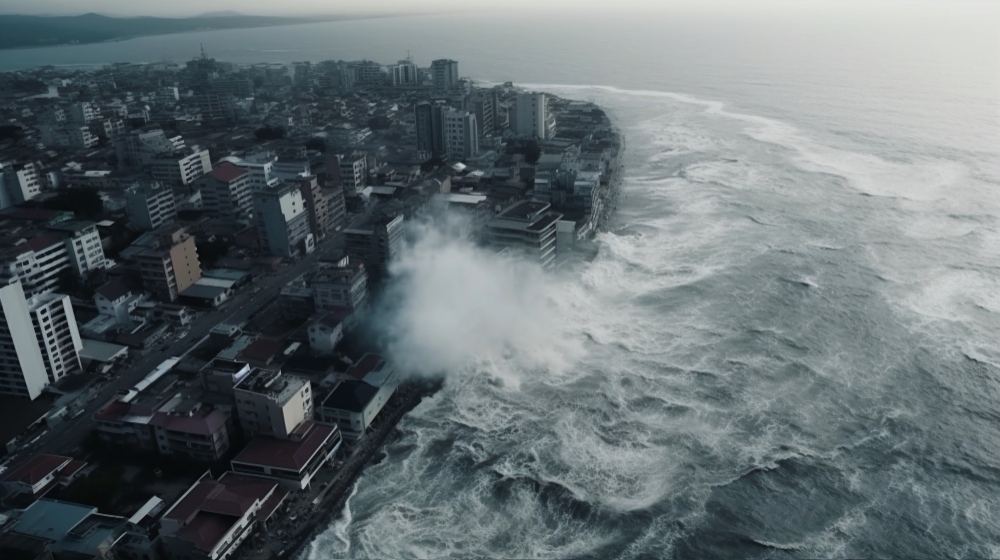#1: Understand the Tsunami Warning Signs
Educate yourself about the signs of an impending tsunami, such as a noticeable and rapid ocean recession, a loud and prolonged roar from the ocean, or the shaking of the ground. Be aware that a strong earthquake near the coast or in the ocean can trigger a tsunami.
#2: Stay Informed
Regularly monitor official sources of information like tsunami warning systems, local authorities, or meteorological agencies. Pay attention to tsunami watches or warnings issued for your area. Act promptly and take immediate action when a tsunami warning is issued.
#3: Seek Higher Ground
If you are near the coast and a tsunami warning is issued, move inland to higher ground as quickly as possible. Head to a designated tsunami evacuation zone or go to a building located on higher ground, preferably above the designated tsunami inundation zone.
#4: Evacuate on Foot if Possible
Avoid using vehicles if a tsunami is imminent, as roads may be congested or blocked. Instead, evacuate on foot if it is safe to do so. Bring essential items like your emergency kit, medications, and important documents with you.
#5: Follow Evacuation Routes and Instructions
Familiarize yourself with the designated evacuation routes in your area. Follow the instructions provided by local authorities and emergency management teams. Stay on designated paths and avoid taking shortcuts that could lead to dangerous or impassable areas.
#6: Move to Higher Floors or Structural Reinforcements
If you are in a multi-story building and unable to evacuate, move to a higher floor. Seek shelter in the uppermost levels or on the roof, if accessible. If necessary, find structural reinforcements such as concrete walls or pillars for added protection.
#7: Avoid Coastal Areas and Waterways
During a tsunami, avoid coastal areas, beaches, and waterfronts. Stay away from harbors, marinas, or rivers, as the force of the incoming tsunami waves can cause strong and unpredictable currents.
#8: Stay Away from the Shoreline After the Tsunami Hits
After the initial wave of a tsunami passes, do not venture near the shoreline. Additional waves, called “tsunami surges,” may follow. These surges can be even more powerful and destructive than the initial wave.
#9: Listen for Official All-Clear Messages
Remain in your safe location until local authorities declare the tsunami threat has passed and it is safe to return. Follow official instructions and listen for all-clear messages before venturing back to the coast or low-lying areas.
#10: Assist Others if Safe
If you are able to do so safely, check on neighbors or others who may need assistance. Offer help or alert authorities if necessary. Be cautious of potential hazards and prioritize your safety at all times.
#11: Be Prepared for Aftershocks
Tsunamis can be triggered by powerful earthquakes, so be prepared for aftershocks. Stay vigilant and follow earthquake safety protocols, including Drop, Cover, and Hold On during any subsequent seismic activity.
#12: Take Care of Emotional Well-being
Experiencing a tsunami can be traumatic. Reach out to friends, family, or support organizations for emotional support and guidance. Take care of your emotional well-being during the recovery process.
By following these numbered steps, you can increase your chances of survival during a tsunami. Remember, your safety should always be the top priority. Stay informed, stay vigilant, and stay prepared in the face of this powerful natural disaster.
